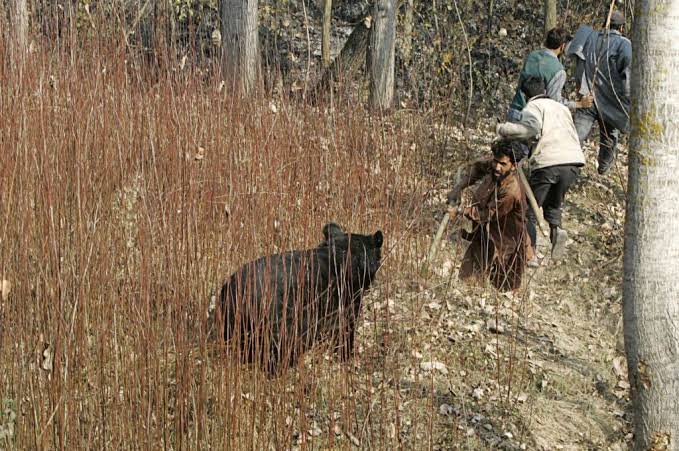Srinagar: At least one person loses life every month in Kashmir due to man-animal conflict.
According to official figures, around 15 people lose their lives annually due to such conflicts in the region.
Over the last 18 years, more than 270 people have lost their lives, while over 3,200 have been injured in man-animal conflict incidents.
The data reveals an upward trend in recent years. During 2020-21, there were five human deaths, which increased to 10 in 2021-22, and further to 14 and 16 in the subsequent two years. Similarly, the number of injuries rose from 87 to 89, then to 65, and finally to 181 over these four years.
Reports of bears and leopards venturing out of forests in search of food and encountering humans and their livestock are nearly daily occurrences, often leading to attacks in Kashmir.
“The main reasons include an increase in human settlements, habitat fragmentation, and the growing population of dogs, which become easy prey for leopards. Additionally, there is a behavioral shift where leopards tend to breed near human settlements,” said a senior official from the Wildlife Department.
The official added that wild animals approaching residential areas should not always be labeled as man-animal conflict; rather, it should be considered a man-animal interaction unless there are injuries to humans or damage to crops.
The Wildlife Department has issued several advisories urging people to take preventive measures to avoid such encounters.
Wildlife officials also emphasize the urgent need for protective equipment such as shields, chest plates, helmets, shin guards, and calf guards to enhance their safety during operations.
Experts further pointed out that climate change, changes in land use patterns, and construction activities in or near forested areas contribute to the increasing man-animal conflict. “Wild animals have their own families and populations, but humans continue to encroach upon their habitats. Buffer zones are necessary, and we often rescue wild animals from unexpected places, like urban areas in Kashmir,” the official explained. (KINS)










